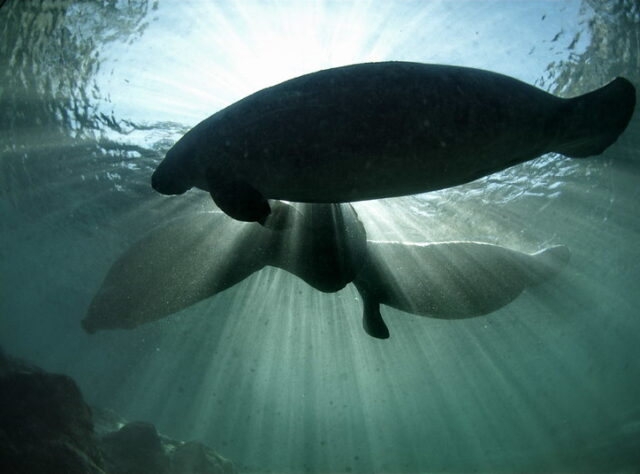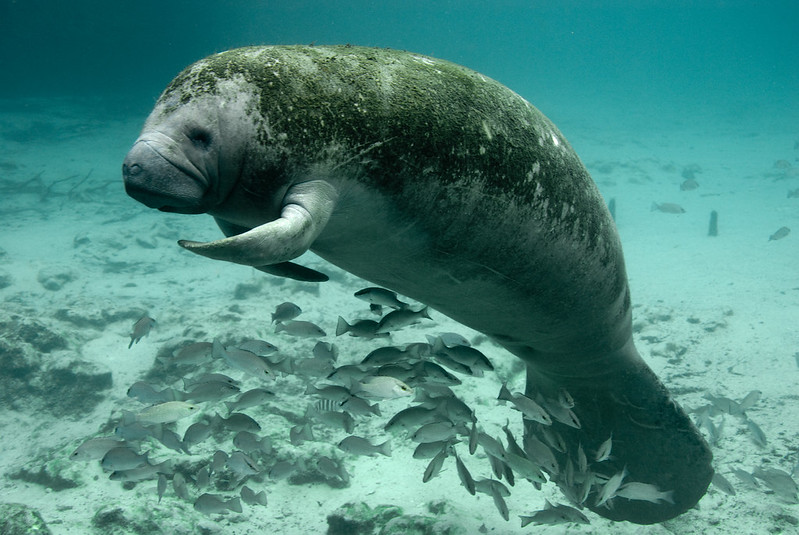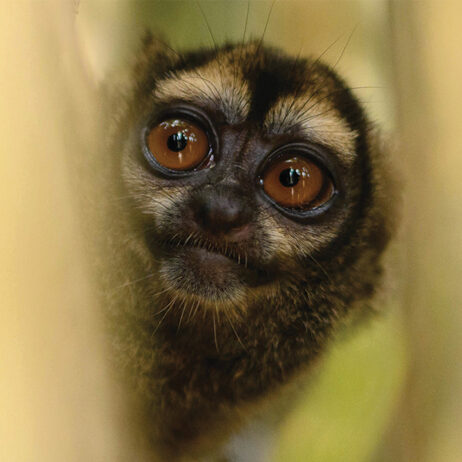
The calm, gentle Antillean Manatee is vital to keeping wetland ecosystems balanced, yet it's numbers are struggling. Credit: David Hinkel (CC BY 2.0)
The Antillean Manatee (Trichechus manatus manatus), gliding peacefully through the waters and streams of the Magdalena River, is one of Colombia’s gentle giants. A subspecies of the West Indian Manatee found in the shallow lagoons of the Gulf of Mexico and the Caribbean down to the riverine areas of South America, with its calm, meandering presence comes acute risk. Facing habitat loss and being caught up in human activities, these manatees are now classed as Endangered by IUCN.
We spoke with Fundación Biodiversa Colombia (FBC) Board Member and manatee expert Natalia Góngora, about this beguiling species and its place in the Magdalena Valley.
What can you tell us about the Antillean Manatee?
The Antillean Manatee is a singularly fascinating animal, it is almost like an unresolved link in the evolution of marine mammals. It completes its entire life cycle underwater yet still retains three nails on its flippers and sparse hair scattered across its body, something usually only seen in mammals that live on land. Its tail fin is also very different from that of other aquatic mammals – large and paddle-shaped to propel the animal underwater.

Manatees move slowly through the water, using their large, paddle shaped tails to propel them. Credit: Keith Ramos (CC BY 2.0)
Something that strikes me about the manatee populations where El Silencio Reserve is located, is that, unlike populations in Florida, these individuals seem much more elusive and timid, they are not easy to catch a glimpse of. Monitoring manatee populations in Colombia is difficult as the rivers have dark, coffee-coloured waters, so most studies rely on indirect techniques such as looking for the traces left behind from feeding and the occasional sighting of their nostrils when they surface to breathe.
Another behaviour that seems to be particular to Colombian manatees is their apparent seasonal migrations, marked by the dry and rainy seasons. During the dry season, when many wetlands dry up, manatees migrate toward rivers then, during the rainy season, they return to the marshes to give birth.

The Barbacoas Lake, where Natalia has studied the population of Antillean Manatee and their behaviour, is a refuge for the species, and expanding El Silencio will preserve the lake as well as all the species that make a home there. Credit: FBC
What are the main threats this species faces?
The most critical situation may be the accelerated sedimentation caused by riverbank erosion. Over time, this can fill in streams, reduce wetland depth, obstruct channels, and alter water flow patterns, potentially even shifting the river’s course and opening new streams to the wetlands. Alongside this, collisions with motorboats or entanglement in fishing nets and ropes is a real threat. In the dry season, the scarcity of water and worsening erosion can leave manatees trapped in very shallow pools with no available food.
How will WLT’s Autumn Appeal help and what will its success mean to you?
This campaign represents one of the rare, real opportunities to make a difference in the conservation of aquatic ecosystems in the region, as well as the manatees and other species that inhabit them. It is an opportunity to ensure that conservation does not remain only as an idea or theory but is real and solid in the region. It is also a call to get involved, contribute ideas, and collaborate to bring this vision to life.

Help us expand El Silencio and save forest, wetlands and wildlife from destruction before it’s too late.

